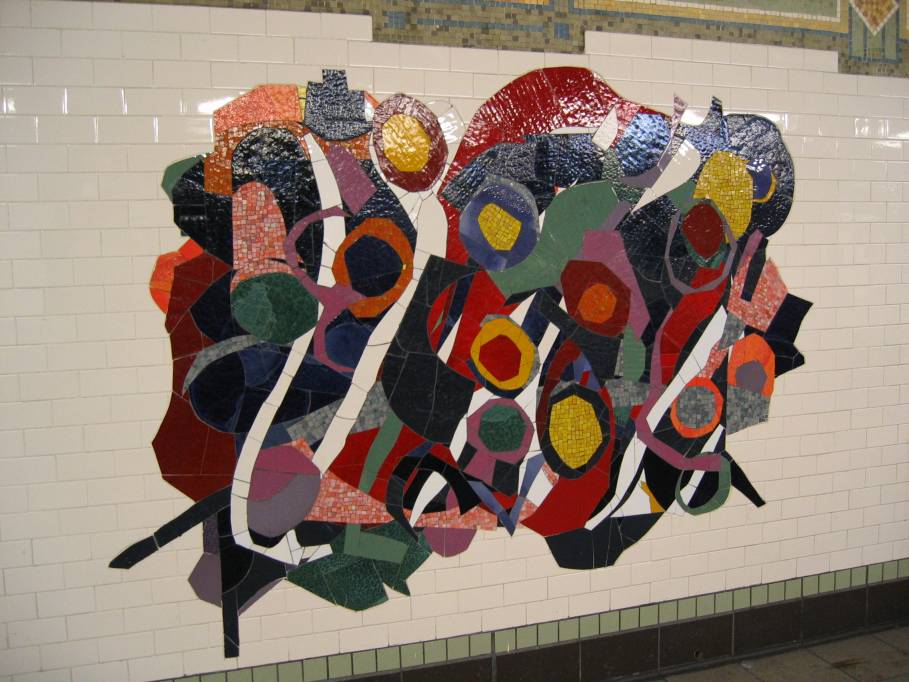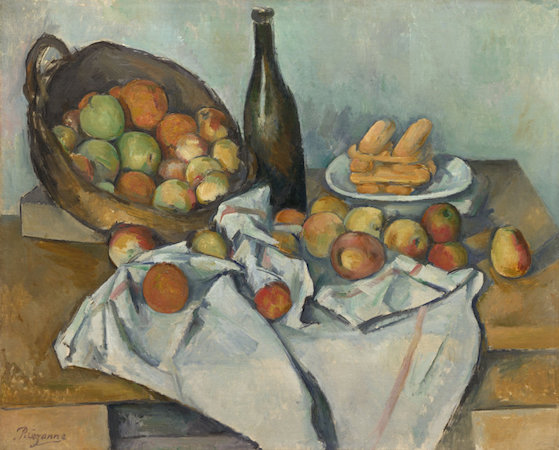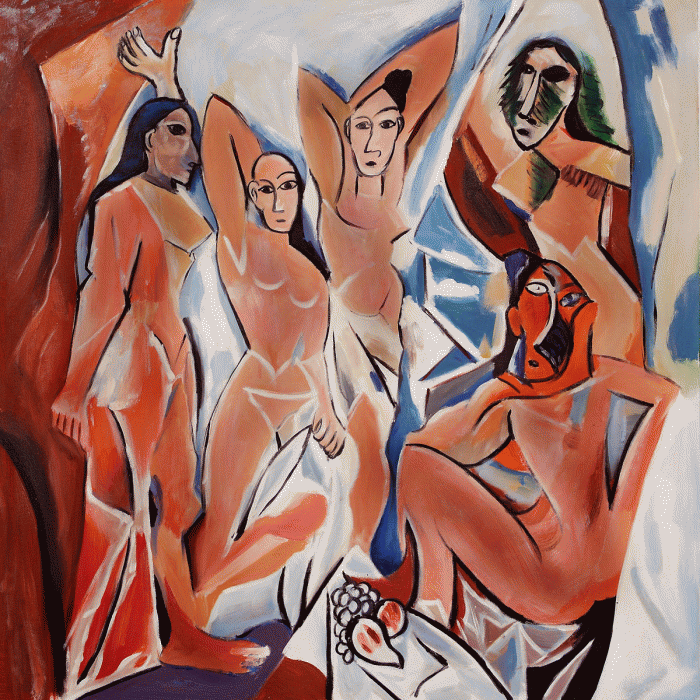Classics

Jacques-Louis David (French painter, 1748-1825). Intervention of the Sabine Women, Overall view without frame. 1799 (creation), Image: 4/31/09 (creation). http://library.artstor.org/asset/SS36066_36066_23794134. Web. 1 Dec 2017.
Just like the modernist age that was discussed in Prof. Simon’s class, there is a political statement within this image. The painter himself was a man who hid many meanings within his paintings, making political paintings during the French Revolution. This was something very common in the modern age, although the traditional “fine art” techniques are still used here rather than more abstract and chaotic methods used within the modernist era. It seems the peace that the women try to bring within the image is the main interest in the subject. Further research states that he made this in a time he was jailed, where the artist stated they wanted to draw something to the more Roman aesthetic.
The quote I chose for this piece specifically comes from Vergil’s book:
“The joyful peace, which put an abrupt close to such a deplorable war, made the
Sabine women still dearer to their husbands and fathers, and most
of all to Romulus himself.”
Although even in the intervention depicted in the illustration, the war still continue to unfold, the quote shows an importance to their role.
Art

During Unit 5 we learned more about the modern world that deviated from traditional techniques. The artist’s strokes became more apparent and the subjects within the painting didn’t look like they were going to bounce out at you anymore. With that, followed abstract art, or even messy looking art that at first glance looked as though it had no purpose in a gallery, but at second glance you can see every stroke had a purpose. This was somewhat the case with Marry Cassatt’s Woman on a Bench. The artist here was trying to capture life as she saw it with the little time she had. It was a form of experimentation, which is something a lot of the modernists art had.
Now if you’re looking for something even closer to present time than that then look no further than the video games we see around us. A YouTuber by the name of The Game Theorists covered such a topic in more detail on a video called Gaming is BROKEN! …What Comes Next? He speaks of how gaming is following the same pattern as modern art history. As time progressed, games have become more abstract and what could be considered a game or what makes a game is pretty loose with new genres being born.
We have managed to create life-like simulations within games. It looked as though you could almost touch the grass, or a video recording of the real world rather than 3D models generated through a computer. They have done an amazing job at immersing the player, making you feel like you were there, something art had striven to do. As The Game Theorist continues to point out that “…,but with so much progress and games being so beautiful and massive and textures feeling more and more real, where do you go now?”
This is where we arrive at post-modernism. All that progress and innovation removed, a rejection of modernism because “everything and anything can be art”. We see this same idea in indie gaming today with titles such as Rock Simulator and Pony Island. These are games that break the rules of what and how to play, and games that know their games. A trend we see in post-modernist art, where art knows it’s art. Even in some of the examples we saw in class, it was discussed that some of the artists purposely wanted you to see the painting as just that, a painting.
The difference between the past and the present is that we have become more interactive with the new art forms out there, after all even video games – something that tell stories like the paintings did – is considered art now a days.
Citations
Jacques-Louis David (French painter, 1748-1825). Intervention of the Sabine Women, Overall view without frame. 1799 (creation), Image: 4/31/09 (creation). http://library.artstor.org/asset/SS36066_36066_23794134. Web. 1 Dec 2017.
Cassatt, Marry. Woman on a Bench.1881. Pastel on Green Wove Paper.
Metropolitan Museum of Art, New York. Art History.
The Game Theorists. “Game Theory: Gaming is Broken! …What Comes Next?” Youtbe, commentary by Matthew Patrick, 26 Nov. 2017, http://www.youtube.com/watch?v=gxzKZdTxNp8.
-Yekaterina Ignatyeva, Team Cronos













 This is a still life painting by my very own brother when he took a painting class in Brooklyn College. I always saw it hung on the wall and thought it looked funky, but looking at it after Unit 5 I saw it a differently. It instantly reminded me of Cezanne’s Basket of Apples. The objects in both paintings look fake; they don’t seem to be painted with the intention of looking realistic. They both have an unorthodox approach to being a still life with shifting perspectives and slight disorder. The disorganized apples in Cezanne’s painting are parallel to the tipped over salt shaker with salt falling out in this painting and, both works have visible brush strokes, In contrast to Cezanne’s painting this one uses vibrant and unnatural colors.Cezanne’s painting uses more earth tones and colors that actually represent fruit whereas is in this painting you wouldn’t know what is in the green bowl.
This is a still life painting by my very own brother when he took a painting class in Brooklyn College. I always saw it hung on the wall and thought it looked funky, but looking at it after Unit 5 I saw it a differently. It instantly reminded me of Cezanne’s Basket of Apples. The objects in both paintings look fake; they don’t seem to be painted with the intention of looking realistic. They both have an unorthodox approach to being a still life with shifting perspectives and slight disorder. The disorganized apples in Cezanne’s painting are parallel to the tipped over salt shaker with salt falling out in this painting and, both works have visible brush strokes, In contrast to Cezanne’s painting this one uses vibrant and unnatural colors.Cezanne’s painting uses more earth tones and colors that actually represent fruit whereas is in this painting you wouldn’t know what is in the green bowl.



 We see this picture almost every time we come on the past in present website. I don’t know the name of the artist but this reminded me of Picasso’s “Les Demoiselles d’Avignon”. Both paintings use a lack of linear perspective and sensible lighting such as chiaroscuro. Both also seem to show reoccurring faces. They both use a sense of cubism but there is a slight difference. The panting above is less abstract and more put together in a scenery sense. Picasso includes really sharp edges and heavier brush strokes. Picasso’s painting doesn’t show a variety of colors while the one above has pops of reds and yellow.
We see this picture almost every time we come on the past in present website. I don’t know the name of the artist but this reminded me of Picasso’s “Les Demoiselles d’Avignon”. Both paintings use a lack of linear perspective and sensible lighting such as chiaroscuro. Both also seem to show reoccurring faces. They both use a sense of cubism but there is a slight difference. The panting above is less abstract and more put together in a scenery sense. Picasso includes really sharp edges and heavier brush strokes. Picasso’s painting doesn’t show a variety of colors while the one above has pops of reds and yellow.





















 Me and a Friend were on our way to check out the puppy therapy and I stubbled across this painting on the wall of the second floor in the Student Center. This painting looks very modern. It reminds me of Kandinsky Composition IV and Improvisation 28 with all the bright colors and a mix of lines and shapes all over the canvas. Its a flat painting. However unlike Kandinskys paintings this painting is full of dimensional images that literally pop out at you. In the right corner the squares have linear perspective.It also uses layering of paint or clay to build dimension.
Me and a Friend were on our way to check out the puppy therapy and I stubbled across this painting on the wall of the second floor in the Student Center. This painting looks very modern. It reminds me of Kandinsky Composition IV and Improvisation 28 with all the bright colors and a mix of lines and shapes all over the canvas. Its a flat painting. However unlike Kandinskys paintings this painting is full of dimensional images that literally pop out at you. In the right corner the squares have linear perspective.It also uses layering of paint or clay to build dimension.








 Paul Cezanne , The Basket of Apples Jan Miller, Still Life with Nectarines, 1979.
Paul Cezanne , The Basket of Apples Jan Miller, Still Life with Nectarines, 1979.









 The painting of A Woman with a Towel by Edgar Degas is found in the Metropolitan Museum of Art. Here we have a nude image of a woman who stands coyly, facing away form her spectators. The woman’s curvy figure twists in an effort to move. The sudden, sharp brush strokes gives the painting a needed shape and texture. It also creates movement and reveals the layers of color the painter used. The name, A woman with a towel, arose from what I believe the painting was made for; to appeal to the collector, specifically the men. She shows apparent form of contrapposto taken from the classical era.
The painting of A Woman with a Towel by Edgar Degas is found in the Metropolitan Museum of Art. Here we have a nude image of a woman who stands coyly, facing away form her spectators. The woman’s curvy figure twists in an effort to move. The sudden, sharp brush strokes gives the painting a needed shape and texture. It also creates movement and reveals the layers of color the painter used. The name, A woman with a towel, arose from what I believe the painting was made for; to appeal to the collector, specifically the men. She shows apparent form of contrapposto taken from the classical era.
































 “Early Spring”, the viewer would most likely have to read the accompanying poem to get a sense of the art work itself, or analyze the work in a non-conventional way. In this way and because it’s break from the classical depiction, “Early Spring” can be considered a modern piece.
“Early Spring”, the viewer would most likely have to read the accompanying poem to get a sense of the art work itself, or analyze the work in a non-conventional way. In this way and because it’s break from the classical depiction, “Early Spring” can be considered a modern piece.







